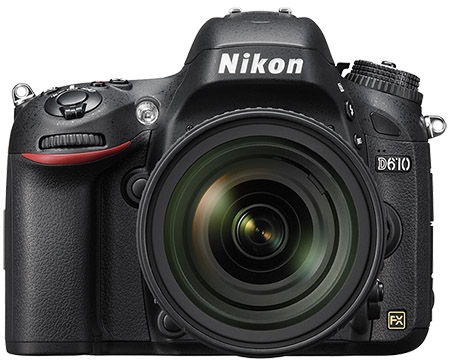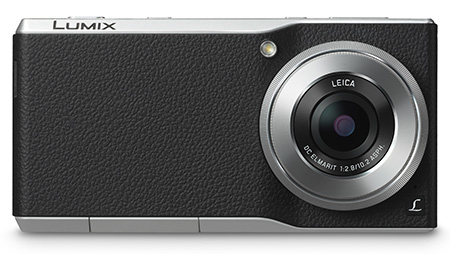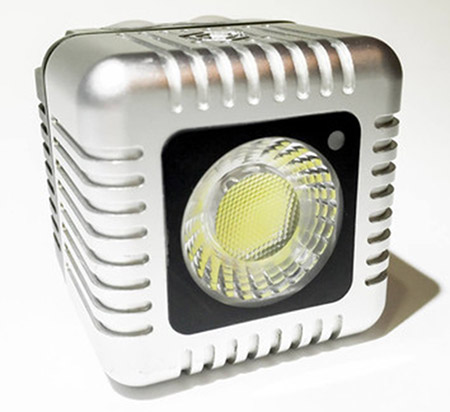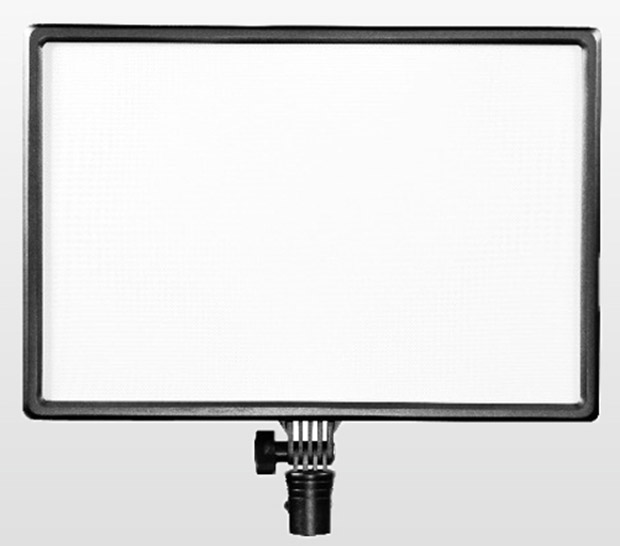From cameras and printers to monitors, lights, lenses and more, each year the team at Australian Photography puts together its list of the awesome photo gear we'd like to get for Christmas. Here are 10 great gift ideas for well behaved photographers. For the full list of 40 gift ideas, check out the December 2015 issue of Australian Photography, on newsstands and in the iTunes store now. Merry Christmas!

For 30 more great Christmas gift ideas,
check out the December 2015 issue of
Australian Photography magazine, on
newsstands and in the iTunes store now.
Parrot Bebop Drone
The ability to get a camera above a landscape can dramatically change our perspective of the world, which is why drones are proving so popular with photographers.
One of our favourites is the Parrot Bebop, a compact drone weighing in at less than 500 grams and measuring just 32 centimetres across, but with a maximum flight time of 22 minutes per charge. The Bebop has a 14-megapixel camera with a “fisheye” lens that can capture stills up to 14 megapixels, video at up to 1080/30p and can also provide a first-person piloting experience.
Three-axis digital stabilisation ensures that imagery always appears smooth, while built-in lens correction technology helps to keep horizon lines looking straight and level. The Parrot Bebop can be controlled directly from your smartphone or iPad using a free application called Freeflight 3. If you prefer more range, you can also buy the Parrot Skycontroller that will give you a range of up to two kilometres.
Flight controls include a return-to-home feature and a programmable flight plan option that controls the Bebop using GPS. The Parrot Bebop Drone sells for $799, the optional Bebop Skycontroller also retails for $799 or you can choose to buy the two together in a kit for $1599.
parrot.com/au
Parrot BeBop.
Nikon D610
The Nikon D610 is the first body in Nikon’s FX (full frame) range specifically aimed at photography enthusiasts rather than pros. It features a 24.3-megapixel FX format with 6fps shooting and Full HD (1080p) video, and it also offers instant photo sharing.
The 24.3-megapixel FX-format CMOS sensor, EXPEED 3 image processor, along with an ISO range of 100 to 6400 (expandable from 50 to 25,600) provide professional capabilities for enthusiasts. The D610 has two movie formats (FX and DX), a time-lapse photography option, microphone and headphone inputs, and users can also review output live on external monitors and record uncompressed video via HDMI.
The D610 uses Nikon’s EXPEED 3, the same image-processing engine found in the D4 and D800 series, meaning it can manage the large data files that an FX-format sensor produces. The D610’s new Qc (quiet continuous) shutter-release mode also reduces mirror noise. The camera also has dual SD card slots.
Until January 31 there is a special cash back offer on the D610 and the 24-120mm zoom lens. If they’re bought in a single transaction, the cash back value is $600. Otherwise there is $300 offered on the D610. The D610 body retails for around $1,799.
nikon.com.au
Nikon D610.
Panasonic Lumix CM1
If you ever wished your smartphone’s camera was actually a smart camera then you might want to take a look at the Panasonic CM1. The CM1 features a 1in (25mm) type 20-megapixel sensor that is much larger than any smartphone sensor we know of. In front of this sensor is a slim Leica DC Elmarit 28mm equivalent f/2.8 lens that can be manually focussed from 10cm through to infinity.
Around the edge of the lens is a control ring that lets you adjust essential controls including focus, aperture (from f/2.8 to f/11), shutter speed (from 60s to 1/2000s) and ISO (from 100 to 25,600). Exposure modes include program AE, aperture priority, shutter priority and full manual mode. What is perhaps the best feature of the camera though, is the option to capture images in RAW mode. For those people who prefer to capture video, the CM1 will also capture 4K video.
The Panasonic Lumix CM1 uses an Android 4.4 (Kit-Kat) operating system, Snap Dragon 2.3Ghz quad core processor and the Panasonic Venus engine for the sake of making your images look beautiful. Oh, and did I mention you can also make phone calls with it? The Panasonic CM1 has a recommended retail price of $1399.
panasonic.com/au
Panasonic Lumix CM-1.
Olympus E-M10 Mark II
If you’re old enough to remember the space race, then chances are you will remember the small and beautifully crafted Olympus OM range of film cameras. The OM1 and OM2 cameras were two of the most desirable cameras of the era, given their form, functionality and large range of accessories. Forty-plus years on, those feelings of desire have been rekindled in the Olympus OM Digital cameras.
The latest OM-D camera is the Olympus OM-D E-M10 Mark II, a 16.1-megapixel Micro Four Thirds interchangeable lens camera designed for photo enthusiasts. The camera has an eye-level OLED 2.36M-dot viewfinder and a 3in (75mm) 1040k dot tilting LCD touchscreen, but unlike the original E-M10, this new camera has built-in 5-axis sensor-shift image stabilisation.
Other features include built-in WiFi, in-camera RAW processing, 1080/60P video capture, and 4K time-lapse photography. If you enjoy photographing action, you can also shoot at up to 10 frames per second. The Olympus E-M10 Mk II is available in silver or black and retails for $799 body only or $999 with a 14-42mm kit lens.
olympus.com.au
Olympus OM-D E-M10 Mark II.
Lume Cube
LED lighting is available in a range of sizes now, but one of the smallest (and smartest) LED lights on the market would have to be the new Lume Cube. Measuring just 38mm across, this little cube can deliver up to 1500 lumens of light for up to 20 minutes at a time; the actual limitation on duration is the heat build up, not battery capacity.
If you give the Lume Cube the opportunity to cool down between long takes, or if you use one of the lower power units, you can get as much as four hours’ worth of light from the device before you have to recharge the unit via the USB port.
Although it’s designed to provide light for your Go-Pro camera or your smartphone, the Lume Cube can also be used to kick in some occasional light for your mirrorless or DSLR camera kit.
You can even use the Lume Cube with a waterproof camera down to a depth of 100ft.
The LumeCube can also be controlled by your smartphone using Bluetooth and a dedicated app. The Lume Cube is available in both a silver and a black model, and will cost you the princely sum of $99.
lumecube.com
Lume Cube.
EIZO ColorEdge CS240 photo editing monitor
Eizo is widely regarded as the world’s best manufacturer of monitors, so much so that the medical industry accounts for over two thirds of its sales. The research, development and stringent manufacturing standards that go into creating Eizo monitors for health professionals also trickles down into the monitors that serious photographers and graphic designers like to use. These monitors might cost more than your average computer screen, but the image quality is superior.
Most Eizo monitors can not only reproduce 99 percent of the Adobe RGB colour gamut, but if calibrated properly they’re representative of what you’ll see in a finished print. One of the most affordable monitors in the Eizo range is the ColorEdge CS240, a 24in 1920 x 1200 pixel wide-gamut LED monitor that has a 16:10 aspect ratio. Like all Eizo monitors, each ColorEdge CS240 has been individually calibrated at the factory to provide a consistent, reliable brightness that is backed up with a five-year warranty.
The stand on the ColorEdge CS240 features height adjustable, full rotation through 344º and the option to rotate the monitor from landscape to portrait mode. The Eizo ColorEdge CS240 sells for $1600.
eizo-apac.com
EIZO ColorEdge CS240.
Ledgo LuxPad 43 Sidelight LED
LED Light panels are becoming popular with still and video photographers alike. The panels are useful for providing fill or key lighting for video, but the constant nature of the lighting is also very useful for stills photographers who want to ‘see’ the light rather than struggle with the momentary nature of strobe lighting.
One of the more innovative LED light panels on the market at the moment is the LuxPad 43 Sidelight LED Panel. Rather than rely on a rectangular array of LED lights all pointing at the subject, the LuxPad panel has the LEDs mounted into the frame of the panel; the light is then directed towards the subject using a clever diffusion panel on the front of the light.
The key advantage with this system is that unlike most LED lights, you don’t see the LED lights reflected in your subject, you just get to notice a beautiful soft light. The Luxpad 43 Sidelit LED Panel is sold with both an AC adaptor and two batteries for $389.
Ledgo LuxPad 43 Sidelight LED Panel.
LanParte HHG-01 Handheld Gimbal
Following a subject with a hand-held camera is like walking through a crowded bar with a tray of drinks! It’s possible but it’s never going to be a smooth exercise. Over recent times though, some clever devices have come onto the market that can actually smooth out most of the bumps and shakes that render handheld videos unwatchable.
These devices, known as gimbals, connect the camera to a handle, or in some cases a drone, to reduce the jarring bumps that are inevitable whenever we try to video and move at the same time. Most gimbals use a set of three motorised arms. A gyroscopic sensor fitted into the mount can detect any movement affecting the camera, and instantly instruct the motors to adjust the camera mount and reduce the bumps and shakes. Despite their complexity gimbals are becoming more affordable by the day.
One of our favourites is the LanParte HHG-01 Handheld Gimbal, which is designed for use with a GoPro or an iPhone. The device weighs just 585 grams without the camera, and is powered by a rechargeable 1500-mAh battery built into the handgrip.
The street price for the unit is $515 including a case, battery and charger.
lanparte.com.au
LanParte HHG-01 Handheld Gimbal.
Leica Q
Christmas arrived in July this year for many Leica enthusiasts when the company announced what is probably its best advanced compact camera to date. The Leica Q (Typ 116) features a 24.2-megapixel full-frame CMOS sensor and a fixed Leica Summilux 28mm f/1.7 ASPH lens. And unlike some earlier digital Leicas this camera can cope with low light. The ISO sensitivity ranges from 100 through to 50,000 ISO. Weighing in at 640g, the Q is not really a true compact, but its size does offer a lot of the styling and functionality we expect from Leica.
Exposure is controlled by the aperture ring at the front of the lens while on the top deck is the ubiquitous Leica shutter speed dial – setting both controls to A puts the camera into Program mode. A 3in (75mm) 1,040,000-dot LCD panel on the rear provides access to the menu items including ISO adjustment, but perhaps the most stunning feature is that 3,680,000 dot electronic viewfinder.
The Leica Q is not a holiday compact, it’s a serious camera that only serious photographers will really benefit from. But that’s OK, with a retail price of $5900 you’re going to need some serious spare change to get your hands on one.
leica-camera.com
Leica Q.
Fujifilm Instax Mini 70
If you ever want a tangible reminder of a special occasion, forget taking photos with a smartphone and try using an Instax camera instead. The small credit-card sized prints from Fujifilm Instax photographs are easy to create and fun to keep, and because they aren’t digital, anyone can enjoy them anywhere. But the magic is often in leaving these small prints in special places, like on your fridge or a corner of your desk, or even under a pillow!
The latest Fujifilm Instax camera is Mini 70 and it offers a few improvements on its predecessor models, including an improved auto exposure mode that will now capture more of the background detail in your night flash photos. There is also a self-timer mode and a small mirror on the front of the camera to help compose “selfie” photographs. The Instax Mini 70 is available in a choice of colours including moon white, canary yellow and island blue; this might prove handy if you want to know which Instax camera belongs to whom at the next party you go to.
The Fujifilm Instax Mini 70 sells for $179. Instax Mini film is sold separately, and is $16 per pack of 10 photos.
fujifilm.com.au
Fujifilm Instax Mini 70.














